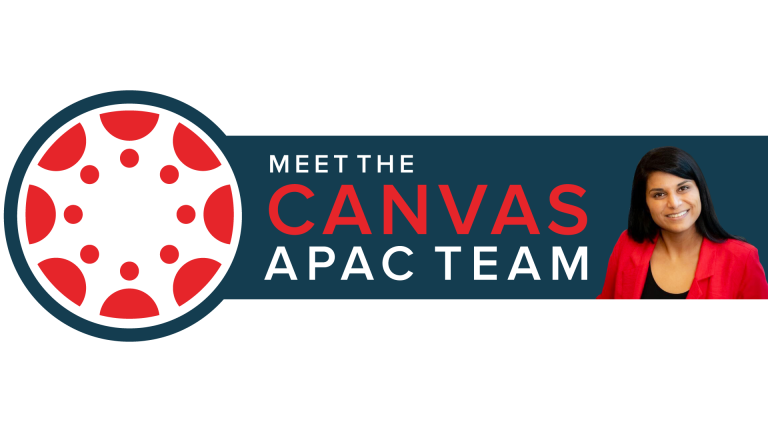
Embedding activities throughout an online course sound like a good way to boost student engagement, learning, and retention.
But what if you could do more with text, video, images, journals, etc.? What if you could embed co-design with learners to get better results?
For example, do the activities in your program’s design and delivery meet global accessibility guidelines? In other words, they should embrace the three principles of Universal Design for Learning (UDL) which acknowledge learner diversity. That’s physical, visual, hearing, sensory, attention and communication barriers.
UDL is a framework to improve and optimise teaching and learning for all people based on scientific insights into how they learn. That’s according to the non-profit US-based organisation that issues those guidelines, the Center for Applied Special Technology (CAST).
At 2022 InstructureCon, learning design experts from the University of Sydney shared their insights into harnessing UDL strategies for more effective activities in online courses. They also discussed how they measure performance. The presenters were writing studies lecturer Benjamin Miller and educational designer Sarah Humphreys.
It wasn’t a rushed, one-off project, said Miller.
“It was part of the university’s commitment to becoming a leader in UDL by showcasing it across the curriculum. We spent a year figuring out what works well and how some things could work better with a pilot program.”
The platform at the centre of the makeover was Canvas, the world’s leading learning management system (LMS) for online teaching and learning.
Spotlight on the principles
The overarching principles of UDL span engagement, representation and action and expression – the ‘why’, ‘what’ and ‘how’ of learning. From these, unfurl seven sub-principles.
The UDL principles are an umbrella term for a pedagogical framework that recognises there is no ‘average’ learner. However, educators and trainers still need to make extra accommodations for some learners, according to a recent scoping review of UDL in tertiary education. It found that UDL principles have yet to be fully or consistently embedded in the sector’s coursework or curriculum in Australia.
That’s despite research showing UDL-friendly courses delivered asynchronously, for example, supporting student autonomy and competence.
The official website https://udlguidelines.cast.org/ sets out the three overarching principles. You could summarise them as below:

The Universal Design for Learning Guidelines offers multiple means of:
Engagement | Representation | Action & Expression
The ‘why’ of learning | The ‘what’ of learning | the ‘how’ of learning
To meet the goal of having expert learners who are:
Purposeful & motivated | Resourceful & knowledgeable | Strategic & goal oriented]
How to develop an exemplary course
Sarah and Benjamin at the University of Sydney targeted a module of a popular course for the UDL makeover. Over the past decade, about 1,000 students enrol annually in WRIT1001 Writing and Rhetoric: Academic Essays at the university. Student cohorts vary and generally include those with a disability, students based overseas or who speak English as an additional language, as well as those who work full-time or have caring responsibilities.
WRIT1001 moved online in 2020 and was earmarked for redesign at the end of 2021 due to falling student engagement over the 13-week course. The material included a “wall of text”, video links, limited interactivity, and little choice in how students learn. It directed them to complete activities in an online journal, said Benjamin.
“Teachers neither marked nor monitored the journals, so many students stopped completing them after a few weeks. Some students asked why they weren’t graded. They wanted the journal to have more relevance, salience and connection to the course goals and assignments.”
Benjamin and Sarah had to rethink the course to map multiple ways of presenting the information for students to participate and demonstrate their learning. They understood that a one-size-fits-all model wouldn’t cater for diversity. Sarah said harnessing the UDL framework gave them a simple structure to design intentionally without feeling overwhelmed.
She designed a template that’s now uniform in all of the institution’s courses and includes the following:
- Features the learning goals at the top of each web page
- Defines the key vocabulary and terms that students may find challenging
- Plugs in an LTI to allow an interactive activity for students to add their comments about the content. This would appear every time they reloaded the page, and
- A new approach to the reading list.
The new-look course offered students choices about how they approach the readings – they ranged between reading the lot or just a few pages and coming up with their own focus questions.
“This was a contentious shift, but it has increased engagement with students continuing their reading long into the course. It’s about having clear goals about what we expect, but they can go about it differently,” he said.
Multiple ways to engage with content
Another contentious element involved incorporating a film screening and encouraging discussion about political rhetoric.
Benjamin said: “Redesigning the activity through a UDI lens forced me to think more clearly about the learning goals and the real objective of this task. We provided multiple pathways to that goal through several options for students to complete the task – watch or stream the film, read a script, or engage with the published archive of the key character’s speeches.”
Then, he considered that overseas students might have internet connectivity issues, personal political reservations or face censorship due to some of the sensitive issues the film raised.
“We had to go further than give a content warning to provide alternative activities to students to complete the task. Using the Canvas LMS to embed these activities meant we were provided with a flexible learning environment to cater for a range of experiences, sensitivities and challenges.”
Powering up evaluation
Students’ sustained engagement with the course and their academic progress doesn’t give the full picture. Sarah and Benjamin have surveyed students twice since the redesign, drawing on the resources of US UDL expert Katie Novak for inspiration.
Sarah said: “Our survey had just ten questions aimed at eliciting from our students how they felt about the redesign. There was a greater sense of belonging, acceptance and support, and over time their feedback improved to roughly 96%. It reassured us that the design features we’d put in place were supporting the needs of our learners.”
Harnessing UDL strategies clarified the learning goals for students. She said it gave them options and helped them feel involved in the unit's learning environment. But with each new cohort of students, it’s an iterative process to “intentionally design for the students sitting in front of you”.
Do you want to learn more about how you can increase adoption via your LMS? You can view their 30-minute InstructureCon presentation.
Related Content
 new_and_next_webinar.png
new_and_next_webinar.pngBlogs
 meet-canvas-apac-team-farrah.png
meet-canvas-apac-team-farrah.pngBlogs
 instructure_2022-may_cofi-273.jpeg
instructure_2022-may_cofi-273.jpegBlogs
